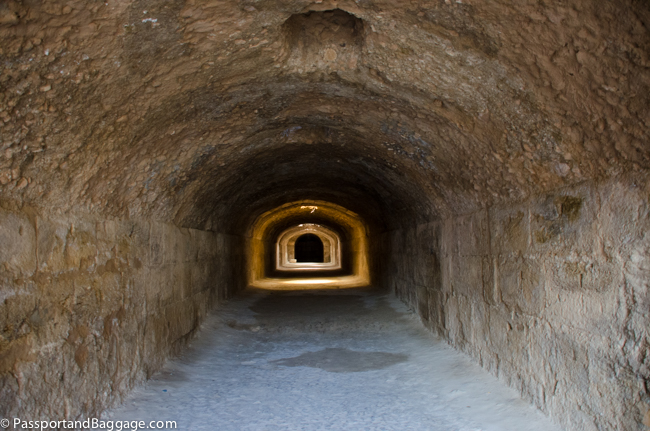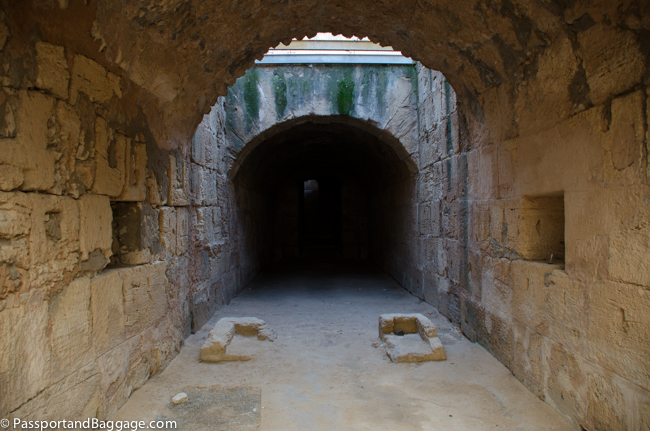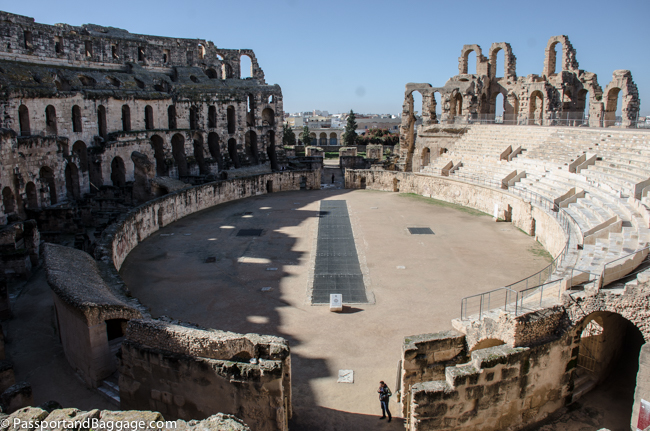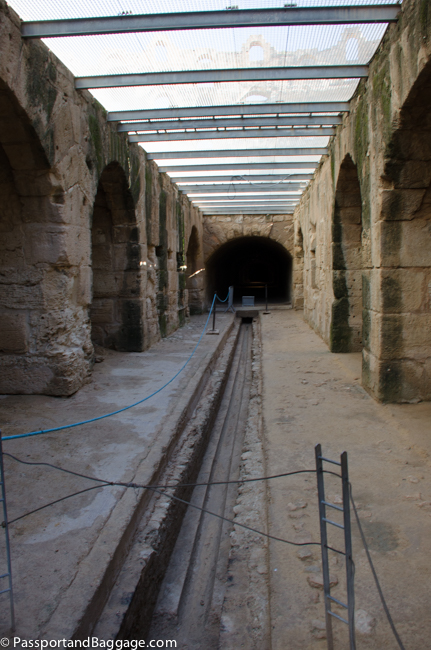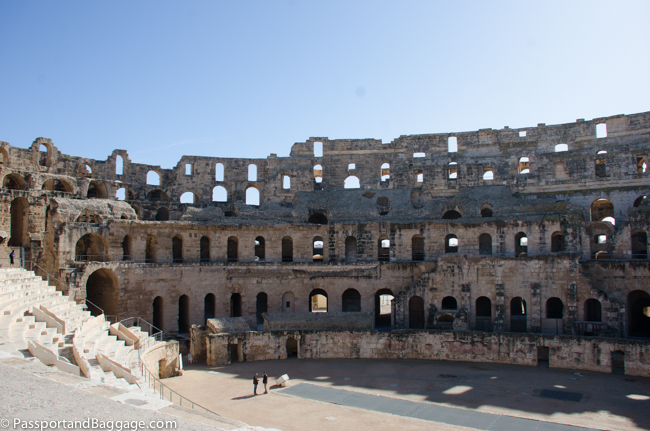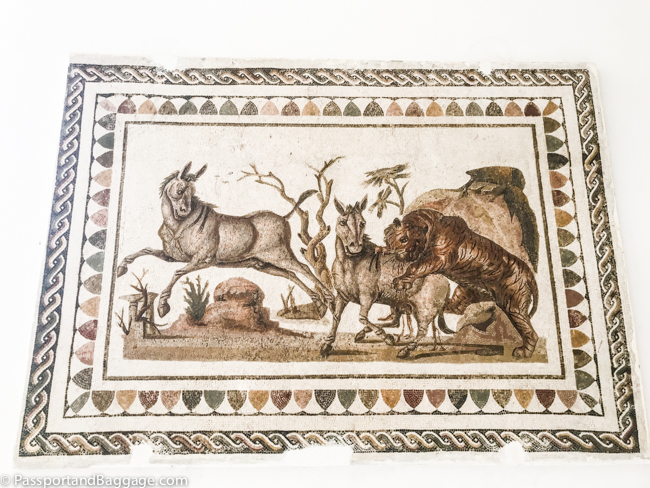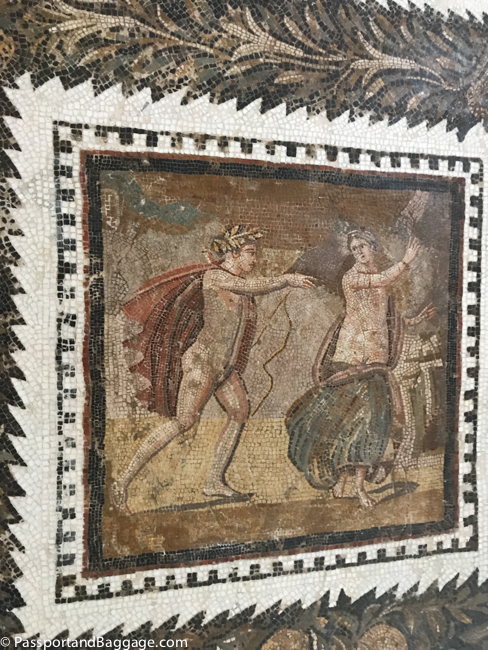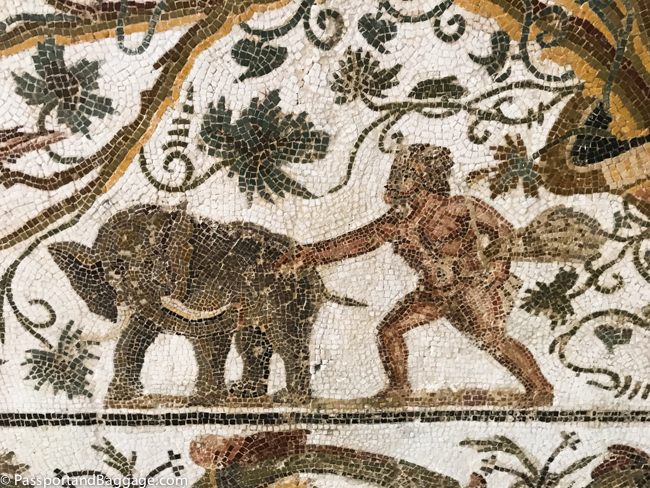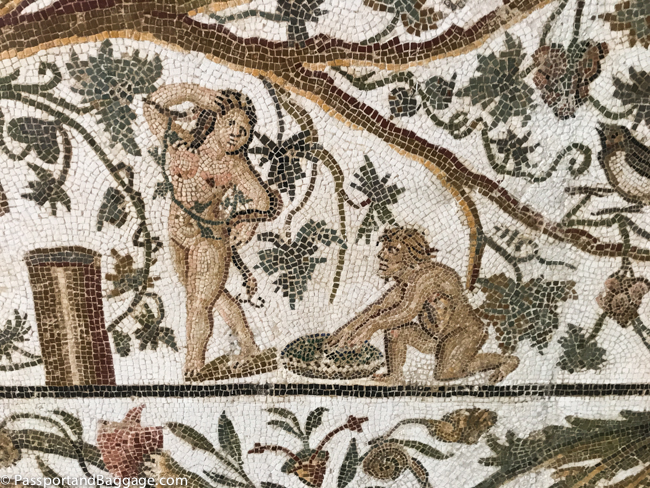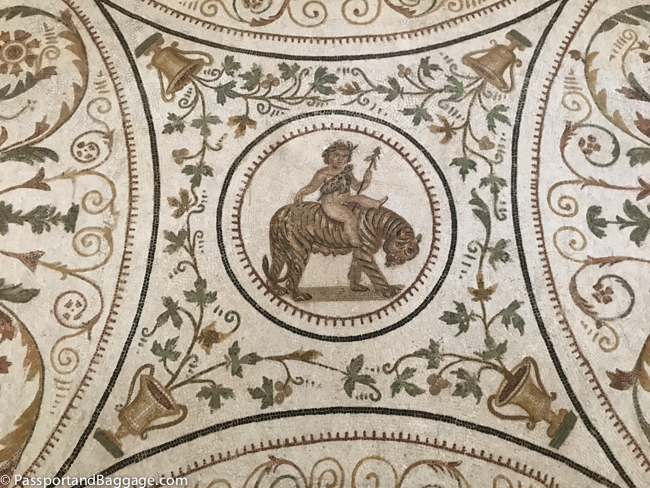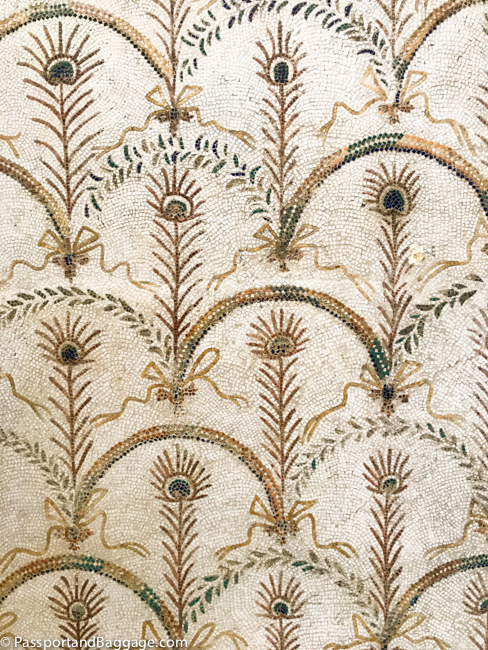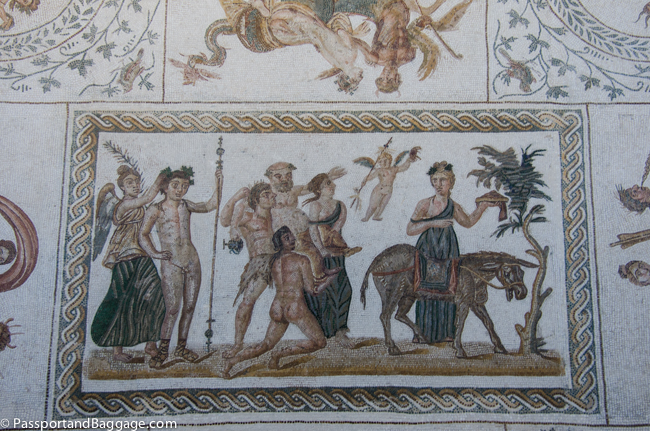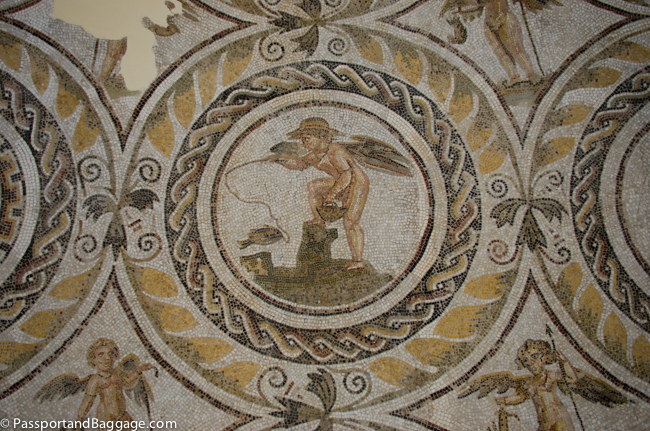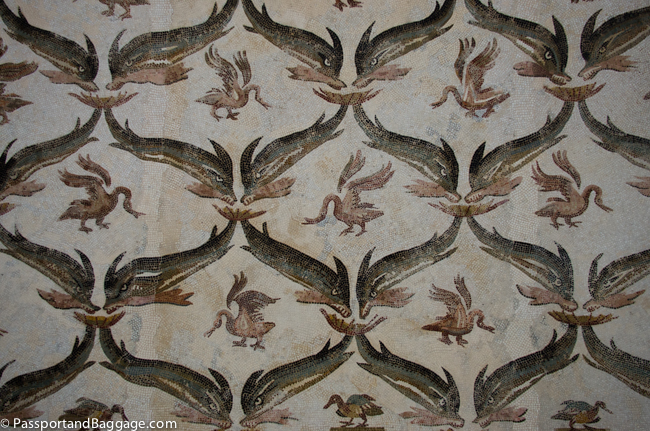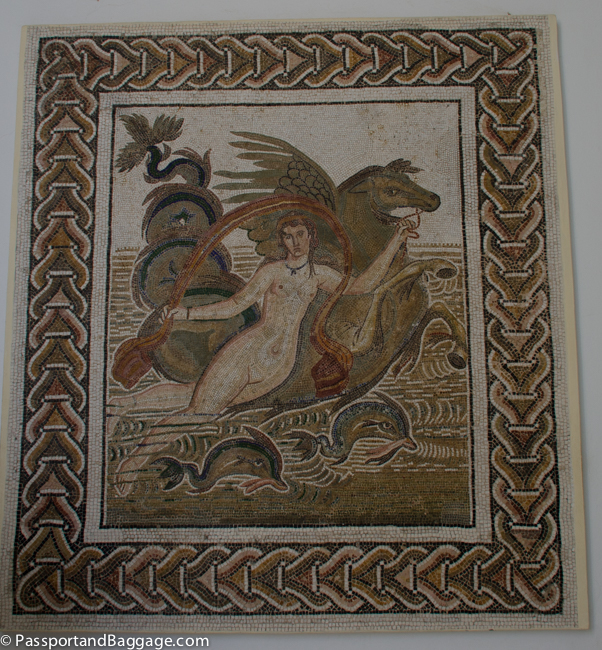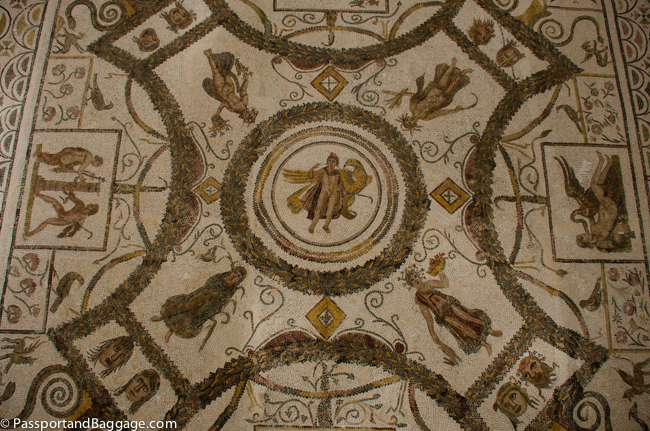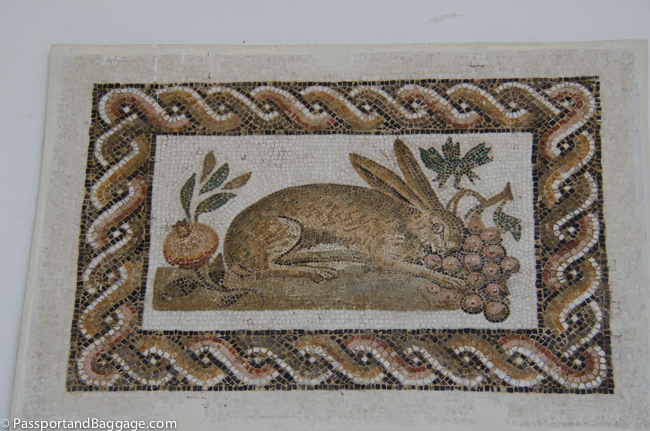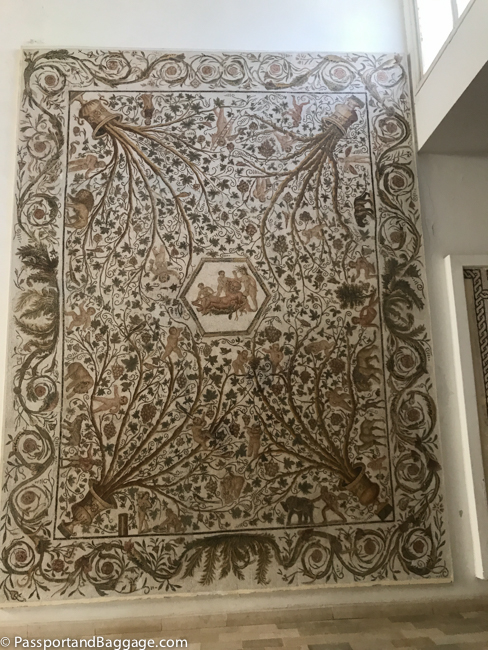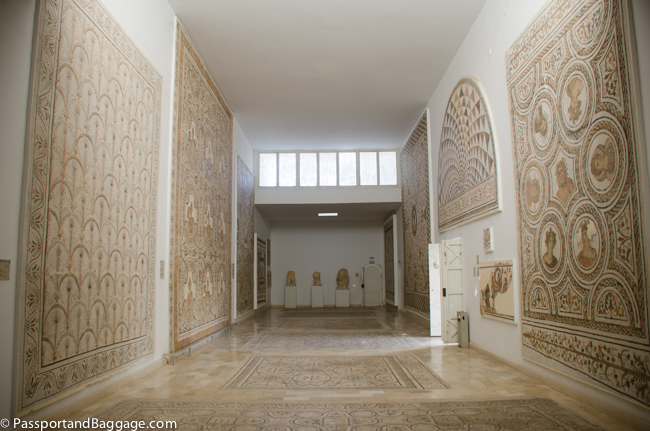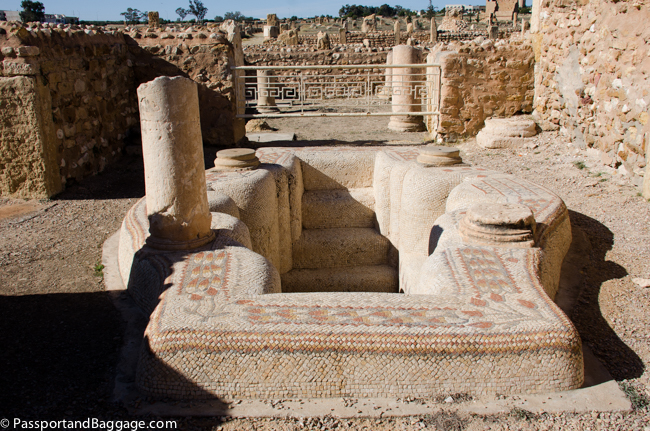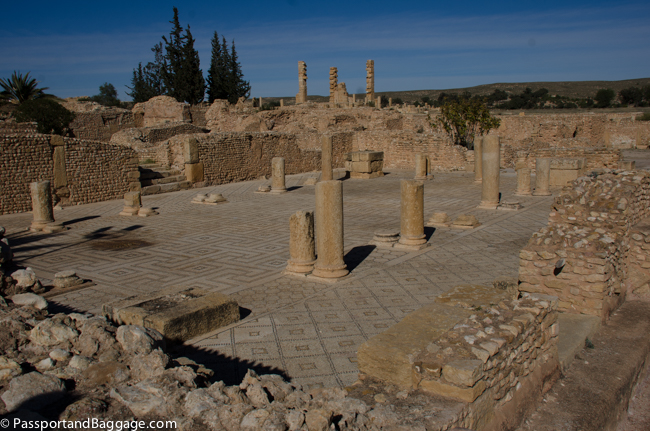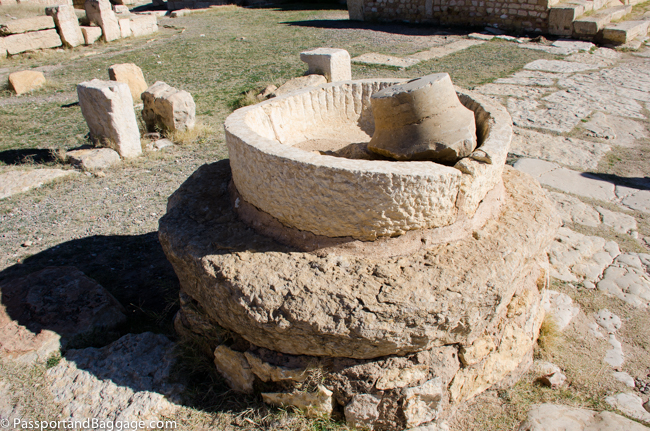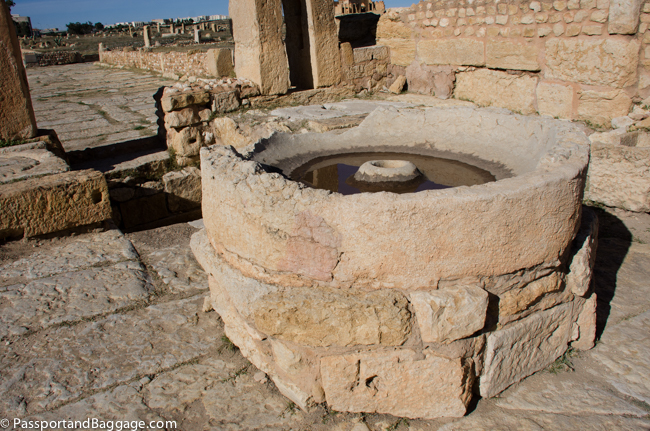December 5, 2019
The Amphitheater of El Jem
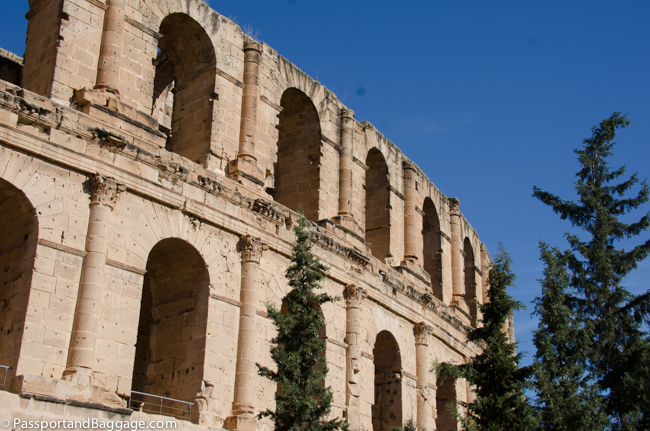 This Unesco World Heritage-listed amphitheater in El Jem (Thysdrus in ancient times) was the second-largest in the Roman world with three tiers of seating estimated to handle up to 35,000 people, considerably more than the population of the town itself.
This Unesco World Heritage-listed amphitheater in El Jem (Thysdrus in ancient times) was the second-largest in the Roman world with three tiers of seating estimated to handle up to 35,000 people, considerably more than the population of the town itself.
 Built around 238 CE, the amphitheater is built entirely of stone blocks, with no foundations. Inside, most of the supporting infrastructure for the tiered seating has been preserved. It is one of the best-preserved Roman stone ruins in the world and is unique to Africa. It was mainly used for gladiator shows and small chariot races. In those times, the income of El Jem (Thysdrus) came from the fact that is was an important center of olive oil manufacturing which was exported in huge quantities.
Built around 238 CE, the amphitheater is built entirely of stone blocks, with no foundations. Inside, most of the supporting infrastructure for the tiered seating has been preserved. It is one of the best-preserved Roman stone ruins in the world and is unique to Africa. It was mainly used for gladiator shows and small chariot races. In those times, the income of El Jem (Thysdrus) came from the fact that is was an important center of olive oil manufacturing which was exported in huge quantities.
The amphitheater of El Jem is the third amphitheater built in the same place. The belief is that the original was constructed by the local proconsul Gordian, who became the emperor of Rome as Gordian III from 238 CE to 244 CE.
In the Middle Ages, it served as a fortress, and the population sought shelter here during the attacks of Vandals in 430 and Arabs in 647. In 1695, during the Revolutions of Tunis, Mohamed Bey El Mouradi made an opening in one of the walls to stop the resistance fighters gathering inside.
It is thought that the amphitheater was used in the manufacture of saltpeter during the end of the 18th and into the 19th century. In the second half of the 19th century, the structure was used for shops, dwellings, and grain storage.
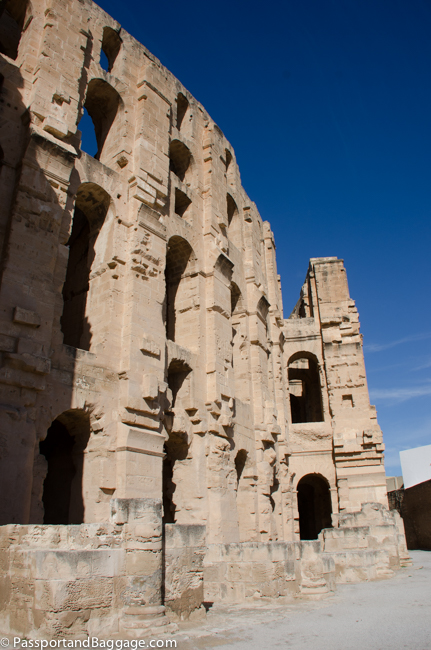
Until the 17th century, the amphitheater remained more or less whole. From then on its stones were used for building the nearby village of El Jem and transported to the Great Mosque in Kairouan
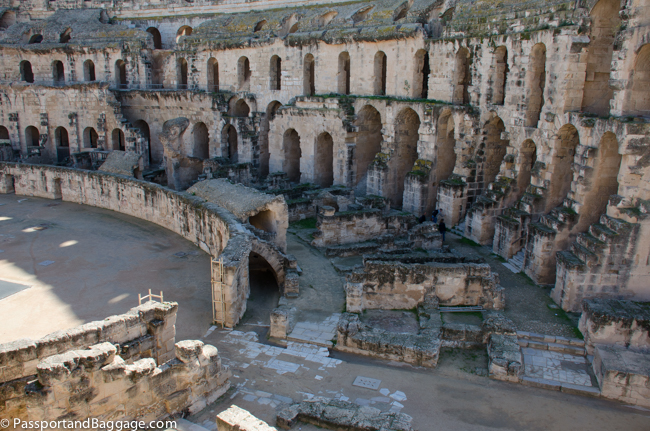
Looking down into the tunnels and chambers where the seating stones were removed on one half of the amphitheater
Mosaics at El Jem
The El Jem Museum houses an exceptional collection of Roman mosaics. The size and number rival those in the Bardo Museum of Tunis, and yet they are in this small out of the way museum in El Jem.
*
Sbetlia
A two and one half hour drive from the town of Kairouan are the much-touted, and sadly disappointing ruins of Sbetlia.
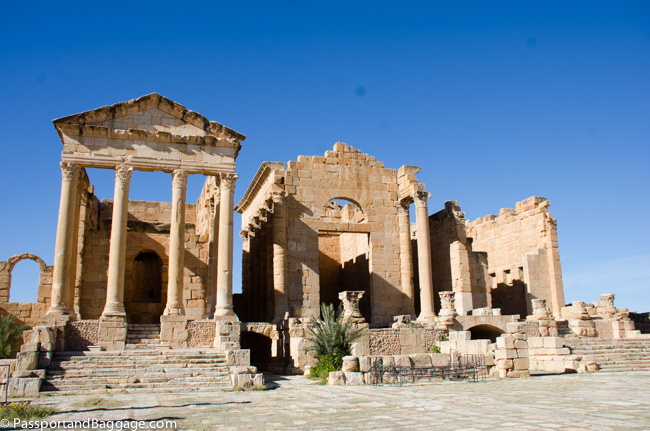
The three temples. Instead of constructing only one temple dedicated to the three most important Roman gods (Jupiter, Juno, and Minerva), the inhabitants of the city built separate temples for each one.
Roman Sbeitla (Sufetula) was established at the beginning of the 1st century CE on the site of a Numidian (202 BCE – 40 BCE, Berber) settlement.
The surrounding countryside proved ideal for olive growing (it still is), and Sbeitla quickly became a wealthy settlement building temples in the 2nd century, when the town was at the height of its prosperity.
Olive groves ensured that Sbeitla continued to prosper long after other Roman towns slipped into decline, helping it to become an important Christian center in the 4th century.
The Byzantines made Sbeitla their regional capital, transforming it into a military stronghold from where they could deal with the area’s rebellious local tribes. In 646CE a Byzantine official known as Prefect Gregory declared himself and the area independent, which was most likely a result of religious differences with the court of Constantinople. The Arab army invaded in 674CE, killed the Prefect and destroyed most of the settlement. It never recovered.
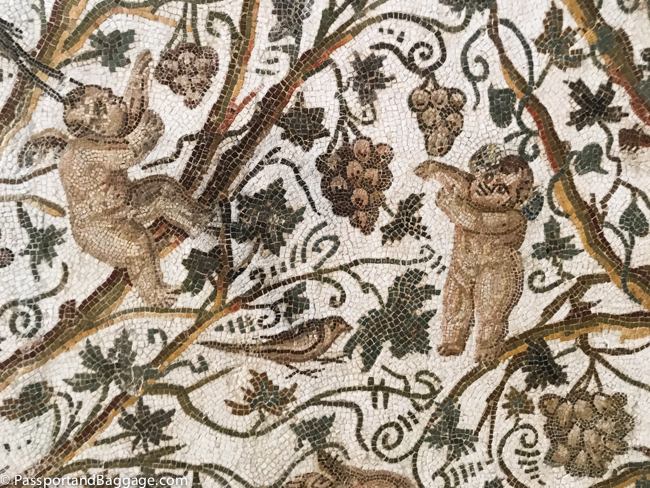
Much of the dating of the history of the olive industry in Tunisia comes from the mosaics found throughout the cities left behind by the Romans
Tunisia was Rome’s most densely populated and coveted of overseas possessions. Due to the fact that In the classical era the climate of North Africa was wetter than now, the fields of Tunisia made it the breadbasket of Rome during an age when Rome ruled the world. In Italy, ruins evoke ”the Republic.” But in Tunisia, the site of a colosseum, as large as the one in Rome, standing in the middle of a remote mud-brick village evokes ”the Empire.”
